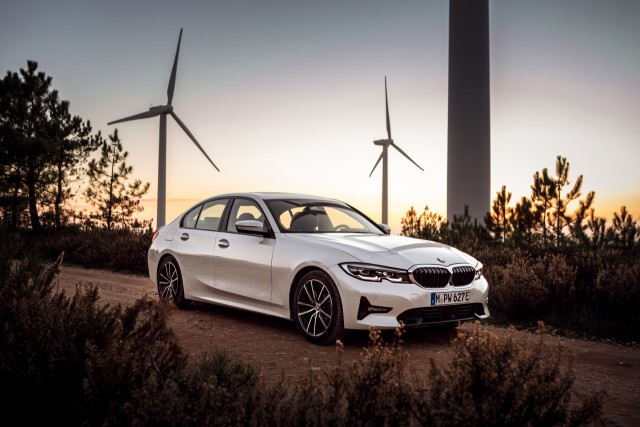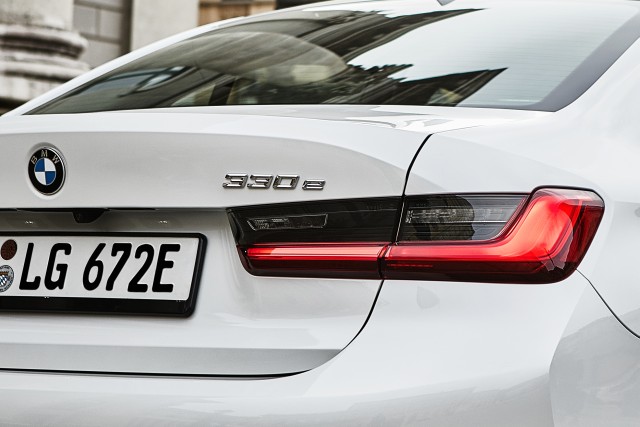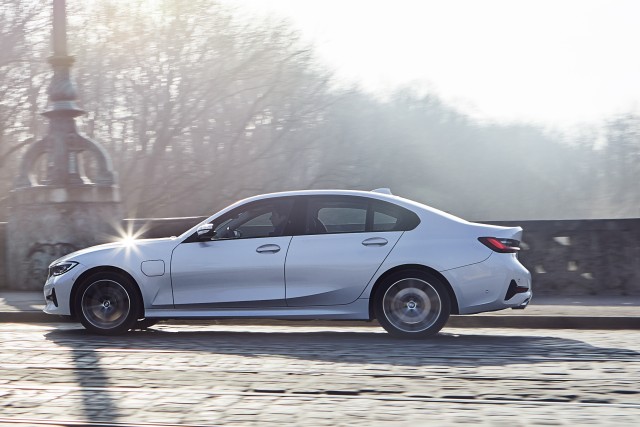The all-new BMW 330e plug-in hybrid petrol builds on the new 3 Series by packing in a larger battery pack, a more powerful powertrain and promising as high as 62.5 km/l.

Electrification has well and truly set in. While this has been coming for a while, it’s evidence has never been more obvious than when all leading car makers have moved to not just electrified powertrains but also entire platforms dedicated to supporting some form of electrification to enhance the environment-friendliness of their car. BMW new efforts have gathered some serious momentum and the promise to deliver even more electrified and all-electric cars has been given a major fillip. Having passed their 500,000th electrified car recently, BMW Group aims to have more than one million vehicles with electrified drive systems on the road by the end of 2021, and have also promised as many as 25 new electrified car models by 2023, that will include hybrid and plug-in hybrid electric vehicles (PHEV) as well. Yes, the output reads in kilowatt (kW) but that will now also mean that we can consider “bhp” to be battery horse power — eventually anyway.

The new BMW 330e, then, is among the more promising of the immediate lot. The brilliant new 3 Series blends sport and luxury better than ever before, with a more pronounced flavour of sport. What’s just arrived, though, the 330e, is a petrol-electric plug-in hybrid capable of 292 hp, albeit for a brief period, and a hefty amount of torque as well. Under that chiselled exterior now lies a combination of combustion engine and electric motor – similar to that of the 745Le we drove last month – for a sublime mix of high-performance potential and outstanding economy.

That is made possible thanks to the combination of a 2.0-litre TwinPower Turbo petrol engine with 184 hp and 270 Nm and an 83-kW electric motor making 113 hp and 265 Nm. The result is a combined system output of 252 hp and 420 Nm for the BMW 330e. The power flows to the rear wheels through an eight-speed automatic. However, the kicker here, quite literally, is XtraBoost, where, when in Sport mode, a vigorous stomp on the throttle brings 40 hp more – a grand total of 292 hp – for up to 10 seconds. That translates to a zero to 100 km/h sprint time of 5.9 seconds and a top speed of 230 km/h. The highlight of the BMW 330e is the pure-electric performance it packs. The 34-Ah high-voltage battery pack can now hold a gross energy content of 12 kWh and that means a range of up to 68 km. The top speed in pure electric mode is 140 km/h. The real stunner is the efficiency in Hybrid mode. The new 330e is rated to be capable of delivering as high as 62.5 km/l on the new WLTP cycle. The CO2 output, too, is rated as low as 36 g/km. Rated electricity needed on the go is 14.8 kWh/100 km.
The high-voltage battery in the BMW 330e can be charged in efficiently during travel thanks to brake energy recuperation. It can also be charged using a conventional socket with the standard charging cable. Using this method, the completely discharged battery can attain 80 per cent of its total capacity within 4.2 hours. A total of 5.7 hours is the estimated period required for a full recharge. With the BMW i Wallbox, these times drop to 2.4 and 3.4 hours respectively.
BMW’s incoming model offensive includes, primarily, the Vision M Next, essentially the successor to the i8, capable of 600 hp, 0-100 in 3.0 seconds and 300 km/h. An i4 is also on the cards, based on the Concept i4 shown recently, as is the all-electric iX3 due to arrive later this year. The new 530e has already been inducted into the portfolio and more plug-in hybrid models, including a potential X7 xDrive45e, will soon follow suit.
Also read: BMW 330i Road-test Review



















Leave a Reply